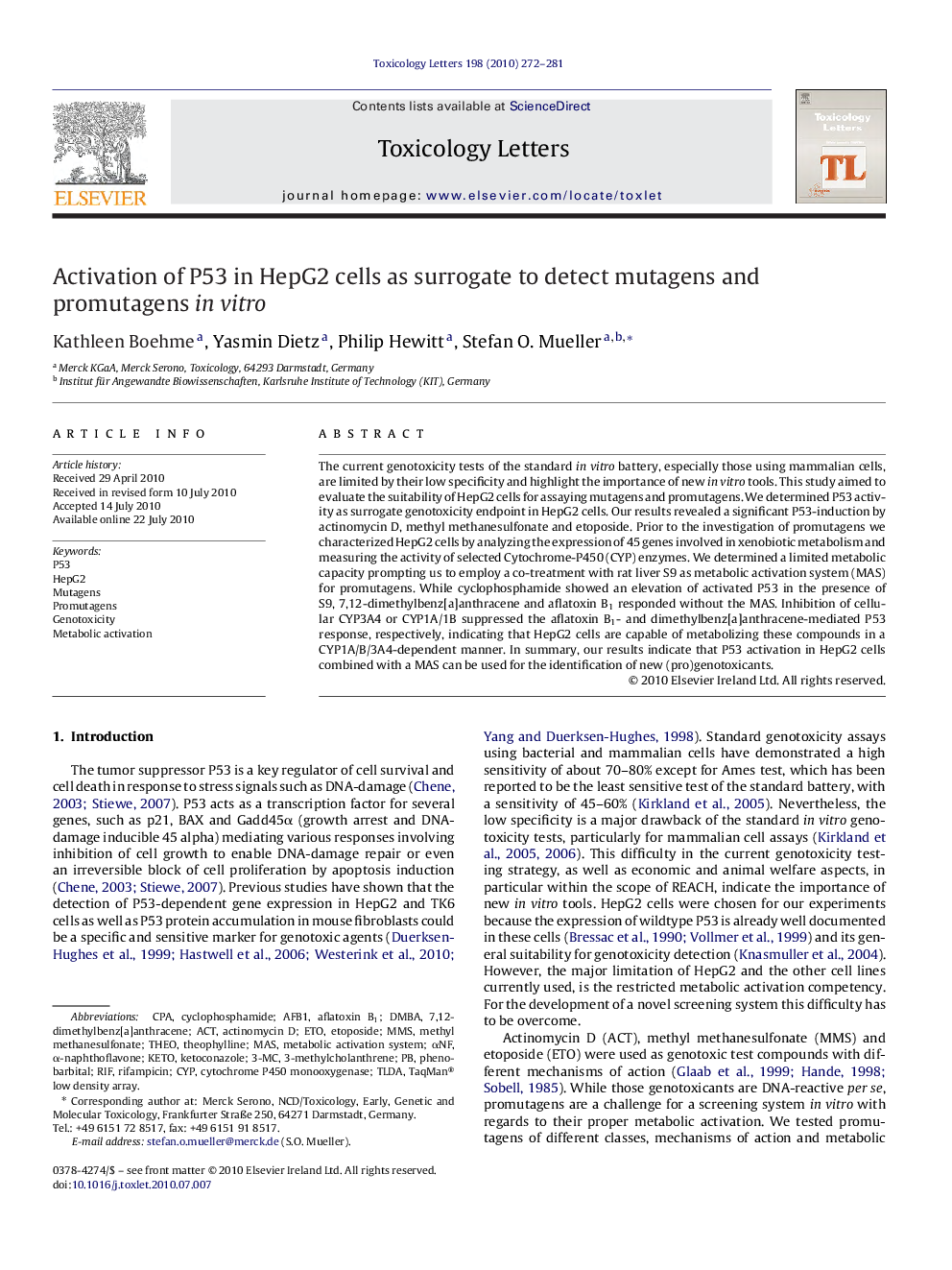| کد مقاله | کد نشریه | سال انتشار | مقاله انگلیسی | نسخه تمام متن |
|---|---|---|---|---|
| 2600623 | 1133276 | 2010 | 10 صفحه PDF | دانلود رایگان |

The current genotoxicity tests of the standard in vitro battery, especially those using mammalian cells, are limited by their low specificity and highlight the importance of new in vitro tools. This study aimed to evaluate the suitability of HepG2 cells for assaying mutagens and promutagens. We determined P53 activity as surrogate genotoxicity endpoint in HepG2 cells. Our results revealed a significant P53-induction by actinomycin D, methyl methanesulfonate and etoposide. Prior to the investigation of promutagens we characterized HepG2 cells by analyzing the expression of 45 genes involved in xenobiotic metabolism and measuring the activity of selected Cytochrome-P450 (CYP) enzymes. We determined a limited metabolic capacity prompting us to employ a co-treatment with rat liver S9 as metabolic activation system (MAS) for promutagens. While cyclophosphamide showed an elevation of activated P53 in the presence of S9, 7,12-dimethylbenz[a]anthracene and aflatoxin B1 responded without the MAS. Inhibition of cellular CYP3A4 or CYP1A/1B suppressed the aflatoxin B1- and dimethylbenz[a]anthracene-mediated P53 response, respectively, indicating that HepG2 cells are capable of metabolizing these compounds in a CYP1A/B/3A4-dependent manner. In summary, our results indicate that P53 activation in HepG2 cells combined with a MAS can be used for the identification of new (pro)genotoxicants.
Journal: Toxicology Letters - Volume 198, Issue 2, 5 October 2010, Pages 272–281